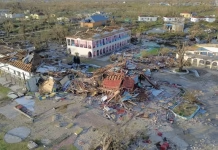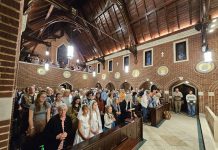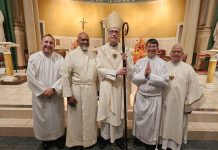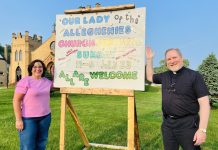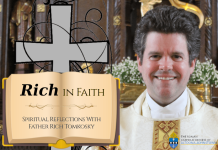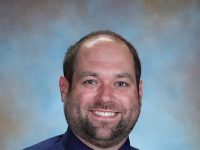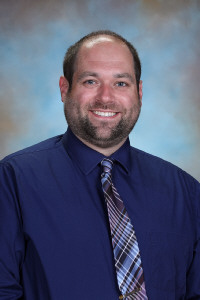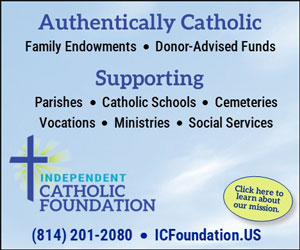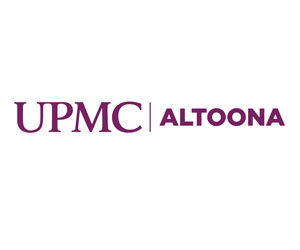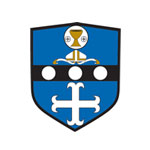Column by Jonathan Nagy
Recently, and rather stunningly, a major American media outlet posted on their Facebook page a story about the regulations and requirements for marriage in the Catholic Church. The article was well-written, explained the process, and included commentary from Catholic clergy. The comments section was just the opposite. Amongst the few positive comments were many negative ones. One comment really struck me. A young woman wrote, “I am so glad I’m not inconvenienced by religion.” After reading that comment, I wished that I could have had a conversation with her, giving her a little lesson on what being ‘inconvenienced by religion’ really means, and how the difficult path can lead to unbelievably positive results.
In the brief history of the United States, our country has been blessed with many wonderful individuals who have become saints or are on the pathway to sainthood, including but not limited to Saint John Neumann, Saint Kateri Tekakwitha, Saint Katerine Drexel, Saint Marianne Cope, Saint Damien de Veuster of Molokai, Saint Junipero Serra, Blessed Solanus Casey, Blessed Father Stanley Rother, and Blessed Michael McGivney. Several more have been declared saints while dozens of others have had sainthood causes opened in the Church. Each of these remarkable individuals have served God and His people faithfully, but two individuals stand out to me as demonstrating how their deep faith could have been seen as an inconvenience but has victoriously led to the growth of the Catholic Church in ways they could have never imagined.
Saint Elizabeth Ann (Bayley) Seton (1774-1821) was born in New York City to a prominent wealthy Anglican family. She married William Seton, and they were blessed to have five children. Her husband contracted tuberculosis, and the couple traveled to Europe seeking a cure. Unfortunately, her husband died on the trip, leaving Elizabeth a grieving widow at the age of 31. While in Europe, she was introduced to Catholicism by family friends, and entered the Catholic Church upon arriving back in New York City. Because of this, her family ostracized her, cutting her off from their wealth. Elizabeth and her children moved to Baltimore with support from Sulpician priest Father Louis William DuBourg and Archbishop John Carroll. She opened a school for girls and later founded a religious order known as the Sisters of Charity of Saint Joseph. She would move her family, the order, and her school westward to the small town of Emmittsburg. Her community not only continued to be involved in education, but also hospitals, orphanages, social outreach and pastoral programs. At the young age of 46, Mother Seton sadly passed away after fighting tuberculosis. Elizabeth Ann Seton was canonized by the Church in 1975.
Our own Servant of God, Father Demetrius Augustine Gallitzin (1770-1840), is a familiar story to many in our diocese. He was born into European royalty. His father was the Russian ambassador to the Netherlands. His grandfather was a Prussian field general. His friend circle included the eventual king of the Netherlands. Maybe most remarkably, his godmother was Empress Catherine the Great of Russia. The Gallitzins enjoyed an enormous amount of wealth. His mother secretly raised him and his sister in the Catholic way, and then sent “Mitri” off to the United States to study. Against the will of his father, he was ordained a priest by Bishop John Carroll, and became the first man to receive all of his holy orders in the United States. He eventually made his way to McGuire’s Settlement, later renaming the town Loretto, building it from the ground up both literally and figuratively, with his own money, not to mention his blood, sweat, and tears. He suffered greatly and endured many stresses in his life. Despite his struggles, he not only founded the Catholic community of Loretto, but he also established several other parishes in the area, such as St. Joseph’s (Hart’s Sleeping Place), St. Patrick’s (now Holy Name), and St. Thomas. Gallitzin turned down episcopal appointments several times to remain in Loretto, where he eventually passed away in May of 1840. He was named Servant of God by the Vatican in 2005 and his sainthood cause is currently in progress.
The similarities between these two great individuals are astounding. For instance, both relinquished wealth and family to follow God and His will. Both also established new Catholic communities and worked to educate and convert thousands to the Church. Both dealt with severe internal struggles, but remained faithful to God until the very end. It is rather noteworthy to think (to the best of our knowledge) that Saint Elizabeth Ann Seton and Servant of God Demetrius Gallitzin never crossed paths. They knew many of the same individuals, had close relationships with Bishop John Carroll, and were relatively close in geographic proximity in the American frontier. Even today, they are buried less than 100 miles from each other.
In my humble opinion, the most remarkable similarity between the two of them was that they took the ‘inconvenience of religion’ and transformed it into a blossoming Church. Giving up when times were tough was not something either would consider publicly, even though many would not have faulted them. The American frontier of the early 1800s was rough, and had physical, mental, and spiritual effects on Elizabeth and Demetrius. The resistance that they faced from many would have turned the weak of heart away in an instant, yet both pushed through despite all hardships. They truly demonstrated that religion is anything but an inconvenience, but rather a pathway to holiness!
Mother Seton once wrote, “We know certainly that our God calls us to a holy life. We know that he gives us every grace, every abundant grace; and though we are so weak of ourselves, this grace is able to carry us through every obstacle and difficulty.” In a quote that seems to back up that statement, Father Gallitzin wrote, “We believe that true faith is indispensably necessary for salvation.” Both knew what real struggle was, experiencing heartbreaking losses in their lives, but both knew that true faith in God is what carries everyone through to the finish line.
We are not, in fact, inconvenienced by religion. On the contrary, our lives are richly enhanced by religion. Every moment of every day that Jesus Christ is included in our lives blesses us abundantly. Holding on to the deep faith, traditions, and teachings of the Church ground us. Catholic Church doctrine is divinely inspired, and those in Church authority from Saint Peter down to Pope Francis have faced turmoil and difficulty in relaying the messages to the people. However, these doctrines lead us to a holier life and assist in preparing our souls for the ultimate judgment. These teachings inspire in true Catholics a moral compass that guides their decisions in life. Few knew this more than Mother Seton and Father Gallitzin.
Many lessons can be emulated from examining the lives of these two holy people but let us look at just a few. First, in the face of difficulty, turn to the face of the Father. God will never lead anyone astray. In the Parable of the Lost Sheep, Jesus illustrated that God will always protect us and look out for us, we just need to call to him! Secondly, do not allow criticism to halt your efforts, but draw strength from the criticisms of others. Father Gallitzin wrote extensively in defense of Catholicism and faced first-hand attempts of violence against him for speaking the truth. Mother Seton struggled to overcome naysayers for her will to found a religious order and school. These criticisms took a toll on both of them, but it also strengthened them in their mission. Thirdly, recognize the ability we have to inspire others. I am not exaggerating when I state that the early Catholic Church in the United States survived and thrived because of these two. We too can bring others to the Church by our actions, words, and faith.
Life for Elizabeth Ann Seton and Demetrius Gallitzin was far from perfect, but their call from God was anything but an inconvenience. We can attribute our Catholic heritage to the groundwork that they laid over 200 years ago. I encourage everyone to consider making pilgrimages to both Loretto and Emmittsburg. Much like the two individuals honored in both locations, the towns are similar in many ways, including Catholic colleges, grottos, and gardens. Understanding how the Church grew in such a bleak time for religion gives us hope as we look at the current world environment.
I end with a quote from both of these inspiring individuals. First, Mother Seton wrote, “I will go peaceably and firmly to the Catholic Church; for if Faith is so important to our salvation, I will seek it where Faith first began, seek it among those who received it from God Himself.” Yes, faith is truly important to our eternal salvation, and that salvation can only be found through Jesus Christ. Finally, from Father Gallitzin, “Pray sincerely that your eyes may be opened; pray for humility to submit your understanding in all matters of religion to the dictates of the ancient church of Jesus Christ, which alone is guided by the Spirit of Truth forever, which alone is perfectly one in all matters of faith and salvation.”
Saint Elizabeth Ann Seton and Servant of God Demetrius Gallitzin, on behalf of American Catholics, I thank you for your bravery in bringing the Word of God to many, and I ask your intercession to God our Father. Pray and intercede for us!
Jonathan Nagy, M.Ed., is the Dean of Students and Social Studies teacher at Bishop Carroll Catholic High School in Ebensburg. He is also the Music Director at the Basilica of Saint Michael the Archangel in Loretto.



